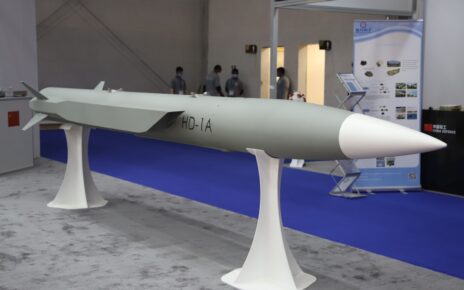Introduction to Maritime Technologies
The maritime industry is on the brink of a technological revolution. As we navigate through turbulent waters, innovations in maritime technologies complex are reshaping how we think about shipping, navigation, and safety at sea. From autonomous vessels that sail without human intervention to advanced communication systems that keep crews connected even in the most remote locations, these breakthroughs are more than just buzzwords they’re transforming an age-old industry.
As ships grow smarter and efficiency becomes paramount, embracing these advancements is crucial for those who want to stay ahead in this fast-evolving landscape. Join us as we explore the latest trends and innovations making waves across the globe. Whether you’re a seasoned mariner or simply curious about life at sea, there’s something here for everyone interested in understanding where maritime technology is headed next.
The Rise of Autonomous Ships
The maritime industry is witnessing a groundbreaking shift with the rise of autonomous ships. These vessels are designed to operate without human intervention, relying on advanced technologies and algorithms.
Equipped with sophisticated sensors, they can navigate safely through complex waters. This innovation not only enhances safety but also improves efficiency in shipping routes.
Companies are investing heavily in research and development to refine these systems. The goal is clear: reduce operational costs while maintaining high standards of reliability.
However, integrating autonomy into existing fleets poses challenges. Regulatory frameworks need updates to accommodate this technological leap.
Moreover, cybersecurity concerns arise as ships become increasingly connected to digital networks.
Adapting training for crew members will also be essential as the role evolves from direct operation to oversight of automated processes.
Advancements in Navigation Systems
Recent advancements in navigation systems are reshaping the maritime industry. Traditional methods have evolved significantly, driven by technology and innovation.
Modern vessels now utilize GPS combined with sophisticated algorithms to improve route planning. This has led to increased efficiency, ensuring ships reach their destinations faster while consuming less fuel.
Real-time data integration allows for dynamic adjustments based on weather conditions or sea currents. By analyzing this information, navigators can make informed decisions on the fly.
Moreover, augmented reality is making waves in navigation. It provides crews with visual overlays of critical data directly onto their field of vision, enhancing situational awareness and safety.
These improvements not only streamline operations but also reduce human error an essential factor when navigating busy waterways or challenging environments. The future looks promising as these technologies continue to advance and integrate deeper into everyday maritime practices.
Improvements in Communication and Connectivity
Recent advancements in maritime technologies complex have significantly enhanced communication on the high seas. High-speed satellite connections now enable real-time data exchange between vessels and shore operations.
These innovations ensure that crews can stay connected with their families while navigating remote waters. Enhanced connectivity also aids in emergency response, allowing for quicker decision-making during critical situations.
Moreover, the integration of Internet of Things (IoT) devices onboard ships facilitates seamless information sharing across various systems. This allows for better monitoring of equipment and fuel efficiency.
The shift toward 5G technology is another game-changer. It promises faster speeds and lower latency, which are crucial for applications like remote piloting or automated shipping solutions.
These improvements foster a more efficient maritime industry by streamlining communication processes and lowering operational risks.
Challenges and Concerns
The rapid evolution of maritime technologies brings with it a host of challenges. Cybersecurity is one major concern. As vessels become more interconnected, the risk of cyberattacks increases significantly. A breach can compromise navigation systems or even shut down critical operations.
The environmental impact also raises eyebrows. While innovations aim to enhance efficiency and reduce emissions, there’s an ongoing debate about their true ecological footprint. The industry must tread carefully.
Moreover, regulatory frameworks struggle to keep pace with technological advancements. Governments face the daunting task of creating laws that ensure safety while fostering innovation.
Crew training presents another hurdle. With autonomous ships on the horizon, existing personnel may need retraining or upskilling to adapt to new roles in this changing landscape an investment that requires time and resources from shipping companies.
Future Outlook for Maritime Technologies
The future of maritime technologies is poised for remarkable transformation. Innovations are set to redefine how vessels operate, enhancing safety and efficiency.
Sustainability will take center stage. As the industry grapples with environmental challenges, green technologies will emerge as a priority. This includes cleaner fuels and energy-efficient designs that minimize carbon footprints.
Digitalization is another key player in this evolution. The integration of artificial intelligence and big data analytics promises to optimize operations, from route planning to cargo management.
Collaboration between tech companies and maritime stakeholders will foster breakthroughs. By pooling expertise, the sector can tackle complex issues more effectively.
Regulatory frameworks will adapt alongside these changes. Striking a balance between innovation and compliance ensures safer seas while embracing new possibilities in maritime operations.
Conclusion
Maritime technologies complex is evolving at a rapid pace, reshaping the way we think about shipping and navigation. The integration of autonomous ships marks a significant milestone in reducing human error and increasing operational efficiency. Meanwhile, advancements in navigation systems enhance safety and accuracy on the water.
Communication and connectivity improvements are also noteworthy. They ensure that vessels remain linked to shore operations, enabling real-time data exchange that can optimize routes and reduce fuel consumption.
However, this transformation doesn’t come without its challenges. Concerns around cybersecurity threats, regulatory frameworks, and environmental impacts need to be addressed as maritime innovations continue to unfold.
Looking ahead, the future of maritime technologies appears bright but requires careful consideration of these complexities. As industries adapt to new technological landscapes, collaboration among stakeholders will be essential for navigating this ever-evolving ocean of possibilities. Embracing innovation while prioritizing safety will undoubtedly pave the way for a more efficient maritime sector in years to come.



